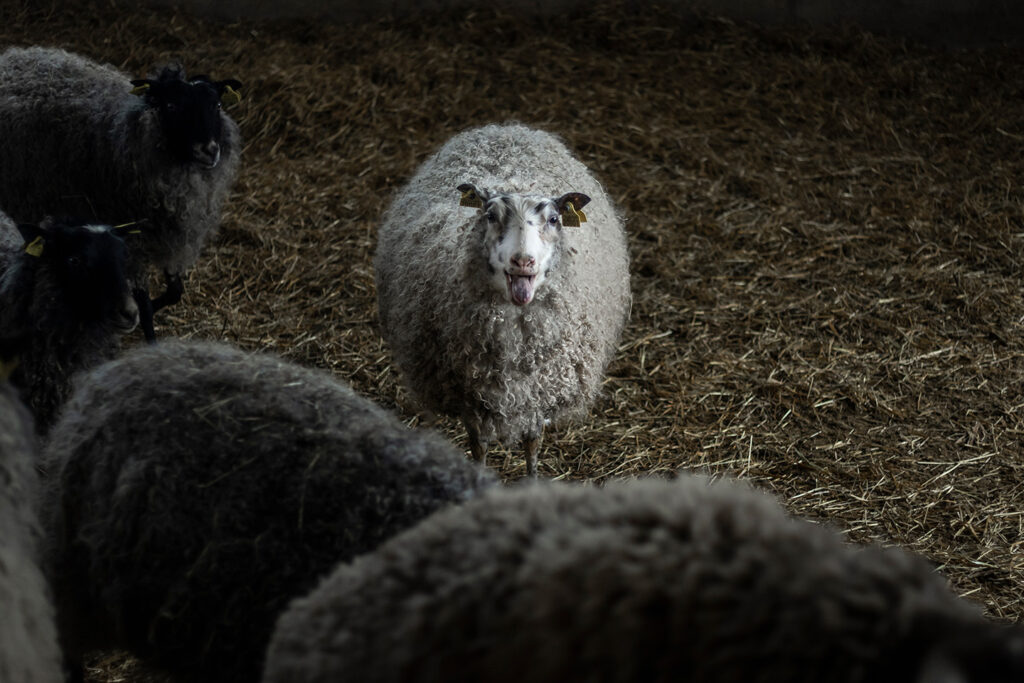The Swedish Wool Initiative Scales Up, Taking Swedish Wool to Industrial Levels
2024.04.22

The Swedish Wool Initiative aims to enable large-scale industrial companies in construction, furniture, fashion, outdoor, and home decor to use Swedish wool in their products. (Photo: Henrik Hansson)
The demand for sustainable and circular materials is steadily increasing, yet most Swedish wool is discarded. To meet this demand and reduce resource waste, 20 Swedish sheep farmers, businesses, and researchers are joining forces to transform Swedish wool into a valuable and sustainable resource within construction, furniture, fashion, outdoor, and home decor. The project builds on the first phase of The Swedish Wool Initiative and is led by Axfoundation and Dalarna Science Park.
“We aim to create conditions for the Swedish industry to easily access high-quality and competitive Swedish wool while finding efficient ways to manage logistics so that sheep farmers and shearers can receive a fair price for their wool,” says Johan Sidenmark, Project Manager, Future Materials at Axfoundation.
Today, an increasing number of Swedish companies are shifting towards replacing fossil-based materials with regional, biobased, and recyclable ones. Wool is one of these promising materials, yet more than half of all wool from Swedish farms is currently discarded. This is partly due to the lack of functional infrastructure to scale up wool collection from small and large farms across Sweden, as well as the challenge of quality assurance in a cost-effective manner.
The scaling up of The Swedish Wool Initiative focuses on enhancing resource efficiency in the Swedish wool value chain and enabling large-scale industrial companies to use Swedish wool in their products. The ambition is to establish a wool collection point in the Swedish region Dalarna, simplify wool quality assurance by implementing the national wool classification system, and develop innovative circular products using Swedish wool as a raw material in collaboration with leading brands.
“Through the pilot project in Dalarna, we are learning how the wool collection could be organized nationally. To gather larger volumes across the country, the system needs to be interconnected. The efficiency of the Swedish wool value chain needs to increase so that all Swedish wool is utilized to its highest value,” says Lina Sofia Lundin, project manager at Dalarna Science Park.
The project brings together stakeholders from across the Swedish wool value chain, from sheep farmers to Swedish companies in industries such as construction, furniture, fashion, outdoor gear, and home decor.
“We are gathering a breadth of actors who usually compete but are now collaborating to find common concrete solutions that benefit everyone. This is an incredibly important step towards a sustainable and circular industry,” says Johan Sidenmark, Axfoundation.
The project is led by Axfoundation in collaboration with Dalarna Science Park and involves the following partners: Arena Svensk Ull, CTH Ericson of Sweden, Filippa K, Houdini Sportswear, Högskolan Dalarna, Insjöns väveri, Nyby Gård, Röyk, Science Park Borås, Sätergläntan, Tiger of Sweden, VERK, Västkustens ullinsamling, Väveriet i Bollnäs, Woolie Design, Wool Rebel, Wålstedts ullspinneri, and Åddebo Ull. The project is partially funded by the Swedish innovation fund Vinnova and Region Dalarna.
Textile and Swedish Wool Facts:
- Global demand for textiles is projected to increase by 150 percent by 2050.
- Approximately 1,000 tons of Swedish wool are produced annually, but more than half is burned or discarded.
- Sweden imports approximately 1,745 tons of processed wool in the form of raw wool, carded wool, and yarn.In Dalarna and northern Sweden, there are approximately 60,000 sheep producing about 120 tons of wool per year.
- Swedish wool is a biobased, and recyclable resource. It is naturally antibacterial, temperature-regulating, dirt-repellent, and flame-resistant. Additionally, it can absorb moisture up to 30% of its weight. These unique properties mean that chemicals like PFAS or biocides, don’t need to be added, which is often done with other materials to achieve similar properties. This enables circular material flows and makes wool a suitable raw material for everything from construction materials and furniture to textiles in fashion, outdoor, and home decor.
Source: Swedish Board of Agriculture, Swedish Sheep Breeding Association, Wargön Innovation














































